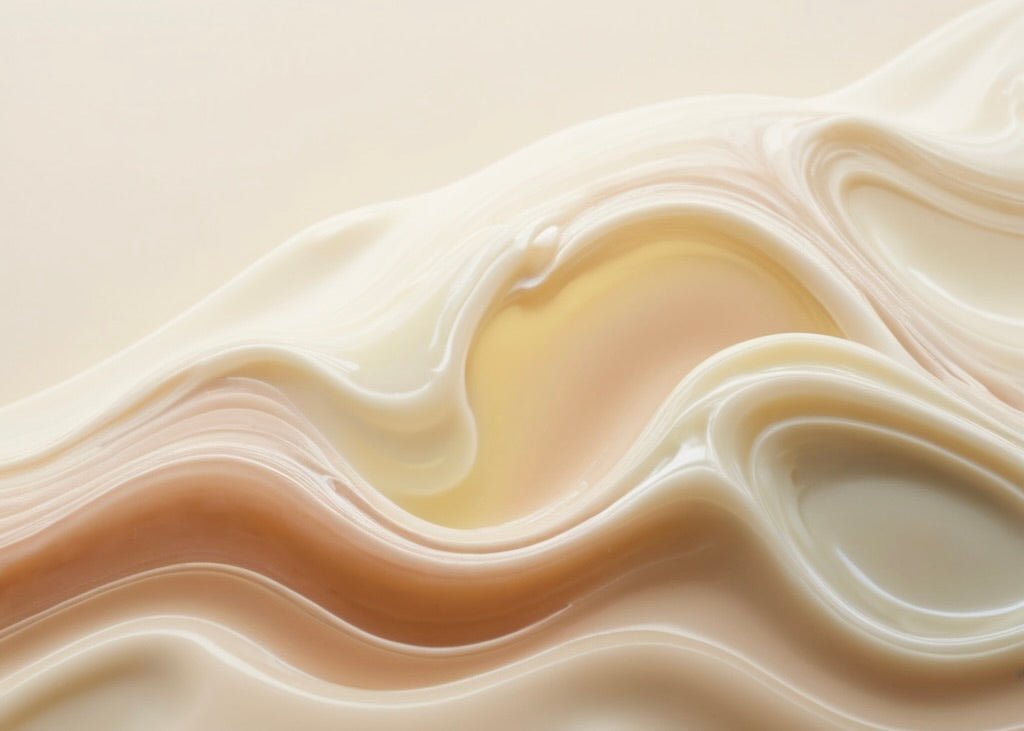
The Benefits of AHA for Your Skin
In the pursuit of healthy and radiant skin, it's important to use ingredients that are not only effective but also safe and sustainable. One such ingredient that has gained popularity in recent years is Alpha Hydroxy Acid, commonly known as AHA. This powerful exfoliant offers numerous benefits for your skin, from improving texture and tone to reducing the appearance of wrinkles and fine lines. In this article, we will explore the wonders of AHA and how it can transform your skincare routine.
Understanding AHA: An Overview
Before diving into the benefits, let's start by understanding what AHA is. AHA, or Alpha Hydroxy Acid, is a group of natural acids derived from various sources such as fruits, milk, and sugar cane. These acids, including glycolic acid, lactic acid, and citric acid, work by gently exfoliating the top layer of your skin, revealing a fresh and renewed complexion beneath.
Alpha Hydroxy Acids have been used in skincare for centuries, with historical records showing that ancient civilizations like the Egyptians and Greeks utilized natural acids for their skin-enhancing properties. The modern-day popularity of AHAs can be attributed to their scientifically proven benefits in promoting skin renewal and rejuvenation.
What is AHA?
AHA, or Alpha Hydroxy Acid, is a type of water-soluble acid that penetrates the skin to break down the bonds between dead skin cells, allowing them to be easily sloughed away. This exfoliating process not only helps to unclog pores but also encourages the production of collagen and elastin, resulting in a smoother and firmer complexion.
Furthermore, AHA is known for its ability to improve the skin's texture and tone, making it a popular choice for individuals looking to address concerns such as fine lines, dullness, and uneven pigmentation. By promoting cell turnover and revealing fresher skin cells, AHAs can help achieve a more radiant and youthful-looking complexion.
Different Types of AHA
There are several types of AHA commonly used in skincare products. Glycolic acid, derived from sugarcane, is known for its small molecular size, allowing it to penetrate the skin deeply. Lactic acid, derived from milk, is gentle and suitable for sensitive skin. Citric acid, derived from citrus fruits, is rich in antioxidants and helps brighten the skin. Each type of AHA offers its own set of benefits, so choosing the right one depends on your skin type and concerns.
In addition to the well-known AHAs like glycolic, lactic, and citric acid, there are other lesser-known variants such as mandelic acid and tartaric acid that also offer unique benefits for the skin. Mandelic acid, for instance, is prized for its antibacterial properties, making it a great choice for acne-prone skin. On the other hand, tartaric acid, derived from grapes, provides gentle exfoliation while delivering antioxidant benefits to combat free radical damage.
The Science Behind AHA and Skin Health
Now that we understand the basics of AHA let's explore the science behind its effects on skin health. AHA works by breaking down the glue-like substance that holds dead skin cells together. By removing these dead cells, AHA not only unclogs pores but also stimulates cell turnover, leading to a healthier and more vibrant complexion.
Alpha hydroxy acids (AHAs) have been a staple in skincare for their exfoliating and rejuvenating properties. Among the most common AHAs are glycolic acid, lactic acid, and citric acid, each with its own unique benefits for the skin. These acids work by dissolving the bonds between skin cells, allowing for gentle yet effective exfoliation.
How AHA Works on Skin
When AHA is applied to the skin, it lowers the pH level, which in turn loosens the connections between dead skin cells. This allows the acid to penetrate the surface layer and exfoliate the skin, revealing a smoother and more even texture. Additionally, AHA also helps to increase the production of hyaluronic acid, a natural moisturizer that keeps the skin hydrated and plump.
Exfoliation is a crucial step in any skincare routine as it helps to slough off dead skin cells that can lead to dullness and congestion. AHA exfoliants are particularly beneficial for those with sun-damaged skin, as they can help fade dark spots and improve overall skin tone. Regular use of AHA products can also enhance the efficacy of other skincare products by allowing them to penetrate more deeply into the skin.
The Role of AHA in Skin Cell Renewal
One of the key benefits of AHA is its ability to accelerate the process of skin cell turnover. As we age, the natural exfoliation process slows down, leading to a buildup of dead skin cells on the surface. AHA helps to remove these dead cells, promoting the growth of new skin cells. This not only improves the overall texture and tone of the skin but also reduces the appearance of fine lines, wrinkles, and hyperpigmentation.
By promoting cell turnover, AHA can also help to prevent clogged pores and breakouts, making it a valuable ingredient for those with acne-prone skin. The gentle exfoliation provided by AHA can help to keep pores clear and reduce the likelihood of blemishes. Incorporating AHA into your skincare routine can lead to smoother, brighter, and more youthful-looking skin over time.
Key Benefits of AHA for Your Skin
Now that we've discussed the science behind AHA, let's explore some of the key benefits it offers for your skin.
Alpha hydroxy acids (AHAs) are not only great for exfoliation but also offer a myriad of benefits for your skin. Let's delve deeper into how AHA can revolutionize your skincare routine.
AHA for Acne Treatment
If you struggle with acne-prone skin, AHA can be a game-changer. Its exfoliating properties help to unclog pores and reduce the formation of acne-causing bacteria. Additionally, AHA can also help fade acne scars and post-inflammatory hyperpigmentation, leaving your skin with a more even complexion.
Furthermore, AHA's ability to regulate sebum production can help prevent future breakouts, making it a versatile ingredient for those dealing with persistent acne issues.
AHA for Skin Brightening
Do you wish for a brighter and more radiant complexion? Look no further than AHA. By exfoliating the top layer of your skin, AHA helps to remove dull and dead cells, revealing a fresh and luminous glow underneath. Regular use of AHA can diminish the appearance of dark spots, sun damage, and uneven skin tone.
In addition to its exfoliating properties, AHA also aids in enhancing the skin's natural renewal process, resulting in a smoother and more youthful appearance over time.
AHA for Anti-Aging
As we age, the production of collagen and elastin slows down, leading to the formation of wrinkles and sagging skin. AHA comes to the rescue by stimulating collagen production, which helps to firm and plump the skin. With regular use, AHA can diminish the appearance of fine lines and wrinkles, giving you a more youthful and vibrant complexion.
Moreover, AHA's ability to improve skin texture and elasticity can contribute to a more resilient skin barrier, protecting against environmental stressors and premature aging signs.
Using AHA in Your Skincare Routine
Now that you're aware of the incredible benefits of AHA, let's discuss how to incorporate it into your skincare routine.
Choosing the Right AHA Product
When selecting an AHA product, it's important to consider your skin type and concerns. If you have sensitive skin, start with a lower concentration of AHA and gradually increase it as your skin adjusts. Look for products that are formulated with natural and sustainable ingredients which are not only effective but also gentle on the environment.
How to Apply AHA for Optimal Results
- Start by cleansing your face with a gentle cleanser to remove any dirt or impurities.
- Pat your skin dry and apply a small amount of AHA product to your face and neck, avoiding the eye area.
- Gently massage the product into your skin using upward circular motions. Allow it to absorb for a few minutes.
- Follow up with a moisturizer to lock in the hydration and protect your skin.
- It's important to note that AHA can increase your skin's sensitivity to the sun, so always remember to apply a broad-spectrum sunscreen with SPF 30 or higher during the day.
Precautions When Using AHA
While AHA offers remarkable benefits for your skin, it's essential to be aware of a few precautions when incorporating it into your skincare routine.
Potential Side Effects of AHA
Some individuals may experience mild side effects when using AHA, such as temporary redness, tingling, or a slight stinging sensation. These symptoms usually subside after a few minutes. However, if you have sensitive skin or experience severe irritation, it's recommended to consult a dermatologist.
Who Should Avoid Using AHA?
Although AHA is generally safe for most individuals, there are a few exceptions. If you are pregnant or nursing, it's best to avoid AHA, as its effects on fetal development are not well-studied. Additionally, individuals with eczema, rosacea, or open wounds should also avoid using AHA, as it can exacerbate these conditions.
In conclusion, AHA is a remarkable skincare ingredient that offers a multitude of benefits for your skin. Its exfoliating properties help to revive a dull complexion, improve texture, and reduce the signs of aging. By incorporating AHA into your skincare routine, you can achieve a healthier, brighter, and more youthful-looking complexion. Remember to always choose products that prioritize natural and sustainable ingredients for the well-being of both your skin and the environment.














